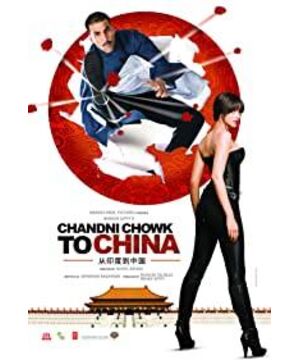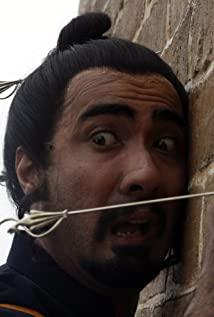The problem is that this is not the work of Xing Ye, nor is it an old three-stage kung fu movie. Although there are typical plots that are quite tortuous. There is no shortage of real living fossils (Liu Jiahui) from the era of kung fu movies, "From India to China" is still a serious Indian movie, the kind of nonsense picture editing, and the beautiful boys and girls who will never be absent will sing and dance. It changed with the quite Chinese name "Liu Sheng".
Under the banner of "China", the young Indian sidhu who came out of the Moonlight Bazaar was regarded as the reincarnation of the god of war hundreds of years ago by the Chinese people who were also ignorant, and pushed to the front line to defeat the rural tyrant Huzhou. From then on, the coincidences of frequent postings were interspersed with spoofs of various Chinese blockbusters such as "Golden Armor", "Lust Caution", and so on. They told a complete and absurd story of revenge for the people and abolished harm to the people. Being ruthlessly knocked down and humiliated, there is no shortage of flashback passages intertwined with new hatred and old hatred.
Levi Strauss once planned the classic narrative into different combinations that are inseparable from its origins, and pointed out that the narrative is actually a different arrangement of the same sequence, and its connotation is complete and unchangeable. It is said that in "From India to China", the perfect annotation is made in the way of combining Chinese and Western, not only using typical bridges, but also almost becoming a condensed book of feature film key frames. Only this time, it was replaced by the ignorant Indian Asan. If he were an American middle school student, he would have become the "King of Kung Fu."
In addition to being very entertaining, the ending did not let Chinese Kung Fu load on Sidhu to defeat Hu Zhou, but made Sidhu use his “personal skills” of cutting vegetables in the market to resolve the violent attacks of powerful enemies, which proved that “fate does not depend on palmistry. Texture, but rely on your own fist” self-reliance motto, at the same time finally borrowed the stone statue of God of War Liu Sheng to solve Huzhou, not only gave the Indian people a face, but also did not forget to put gold on the face of Chinese idols (though Liu Ye just Legends). Speaking of which, when filming in India’s neighboring countries, regardless of the uprightness and harmony, they all adhere to the principle of good-looking and tasteful. Compared with the blockbuster films of this dynasty, they are not well-known, and they can be judged by their intentions.
View more about CC2C reviews











